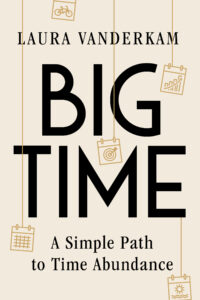As I’ve been visiting various workplaces over the past year (for speeches/workshops/etc.), I’ve found that a lot have landed on the official hybrid model of three days in the office, two at home. It makes sense. But unless a company is actually going to fire people for not swiping in precisely 145 times a year (hard to do when folks travel to clients or conferences some times too) this is hard to enforce. And so, particularly over the summer, my guess is that the days-in-office tally averages out to less than three.
This isn’t true for every job of course — it’s mostly an information work phenomenon. According to the American Time Use Survey, which was just recently released, in 2023, 35 percent of employed people did some or all of their work at home on the days they worked. But among workers over age 25 who have a bachelor’s degree or higher, 52 percent of employed people performed some or all of their work at home on the days they worked.
Now, the “some or all” phrasing is tricky, because anyone checking email from home after a workday at the office is, technically working from home.
But when I follow the data from the ATUS press release to its official Table 6, I see that only 57 percent of those with a bachelors degree or higher did some or all of their work at their workplace on the days they worked, which would at least seem to imply that 43 percent were working at home exclusively on the surveyed work day.
This is a lot! If you consider the various jobs-requiring-a-bachelors-degree that actually can’t be done remotely, it’s a high proportion of those that actually can. It is fascinating to me to see how things wind up changing in the real world. When I was writing I Know How She Does It in 2013-2014, negotiating to work from home one day a week (often Friday) was a big deal. People tried to figure out how to approach their managers about it, and often people were willing to give up something to get that perk. And it was definitely seen as a perk — something you had to be at a company for a while to get. Even then it was precarious. I am familiar with one workplace where the company moved into a gleaming new office building…and promptly tried to get rid of people’s work-from-home agreements.
Now, “you can work from home on Fridays” — 2014’s big concession — is less than table stakes.
While there have been some advances in technology, we had smart phones and video conferencing capabilities in 2014. There was no real reason a 3-2 hybrid schedule (that often isn’t even 3-2) couldn’t have been the norm then. It just wasn’t. A lot of organizations assumed there was no way their work could be done from home, until it had to be. If a lot of your work involves emailing and calling people in other places, there’s really no reason you have to drive 30 minutes (or take a train) to do that.
I imagine this is how change happens in a lot of scenarios. Little by little and then suddenly all at once. It seems unlikely I’ll ever wind up writing an article on how to negotiate to work from home one day a week again!
In other news: Speaking of content…This week over at Vanderhacks I suggested people “Upgrade your background music” and “Set a rain date” so you can keep moving forward even when life intervenes. The post behind a paywall was about “Big family logistics” — 13 little hacks for managing a crowd.
In the Before Breakfast podcast, I suggested people “Make silence meaningful,” (based on a tip from Anna Goldfarb) and I suggested some mindset shifts for figuring out “How busy people can travel more.”
Over at the Best of Both Worlds Patreon community site, we’re talking about Friday rituals, what we’re reading and, of course, the private ask-me-anything video.


I’ve been hybrid for 11 years with various schedules, but finally hit my limit with the long reverse commute even just two days a week.
With many departments at my company going fully remote and having the transferrable skills for a lot of those roles, I’ve recently made a change purely for the chance to be remote. It seems like a poor talent strategy within my company that this is even happening, but there you go!
And yes, there are a lot of people who went in for an hour in the morning to swipe their badges and then left. Fun fact, most places you don’t have to swipe on the way out so there is a lot of this badge swipe gaming going on across corporate offices right now!
@Amy – ah yes, the morning swipe…I’ve also heard of the lunch swipe – come in for the catered lunch (designed to lure people in) but leave afterwards. The truth is, it’s hard to work in an open plan office – many times a home office is just a lot more conducive to getting things done!